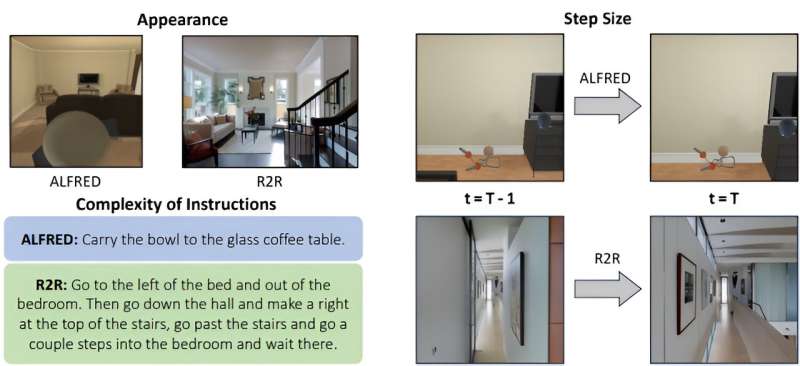
Someday, you may want your home robot to carry a load of dirty clothes downstairs and deposit them in the washing machine in the far-left corner of the basement. The robot will need to combine your instructions with its visual observations to determine the steps it should take to complete this task.
For an AI agent, this is easier said than done. Current approaches often utilize multiple hand-crafted machine-learning models to tackle different parts of the task, which require a great deal of human effort and expertise to build. These methods, which use visual representations to directly make navigation decisions, demand massive amounts of visual data for training, which are often hard to come by.
To overcome these challenges, researchers from MIT and the MIT-IBM Watson AI Lab devised a navigation method that converts visual representations into pieces of language, which are then fed into one large language model that achieves all parts of the multistep navigation task.
Rather than encoding visual features from images of a robot's surroundings as visual representations, which is computationally intensive, their method creates text captions that describe the robot's point-of-view. A large language model uses the captions to predict the actions a robot should take to fulfill a user's language-based instructions.
Because their method utilizes purely language-based representations, they can use a large language model to efficiently generate a huge amount of synthetic training data.
While this approach does not outperform techniques that use visual features, it performs well in situations that lack enough visual data for training. The researchers found that combining their language-based inputs with visual signals leads to better navigation performance.
"By purely using language as the perceptual representation, ours is a more straightforward approach. Since all the inputs can be encoded as language, we can generate a human-understandable trajectory," says Bowen Pan, an electrical engineering and computer science (EECS) graduate student and lead author of a paper on this approach, which is published on the arXiv preprint server.
Solving a vision problem with language
Since large language models are the most powerful machine-learning models available, the researchers sought to incorporate them into the complex task known as vision-and-language navigation, Pan says.
But such models take text-based inputs and can't process visual data from a robot's camera. So, the team needed to find a way to use language instead.
Their technique utilizes a simple captioning model to obtain text descriptions of a robot's visual observations. These captions are combined with language-based instructions and fed into a large language model, which decides what navigation step the robot should take next.
The large language model outputs a caption of the scene the robot should see after completing that step. This is used to update the trajectory history so the robot can keep track of where it has been.
The model repeats these processes to generate a trajectory that guides the robot to its goal, one step at a time.
To streamline the process, the researchers designed templates so observation information is presented to the model in a standard form—as a series of choices the robot can make based on its surroundings.
For instance, a caption might say "to your 30-degree left is a door with a potted plant beside it, to your back is a small office with a desk and a computer," etc. The model chooses whether the robot should move toward the door or the office.
"One of the biggest challenges was figuring out how to encode this kind of information into language in a proper way to make the agent understand what the task is and how they should respond," Pan says.
More information: Bowen Pan et al, LangNav: Language as a Perceptual Representation for Navigation, arXiv (2023). DOI: 10.48550/arxiv.2310.07889
Journal information: arXiv
This story is republished courtesy of MIT News (web.mit.edu/newsoffice/), a popular site that covers news about MIT research, innovation and teaching.
Citation: New method uses language-based inputs instead of costly visual data to help robots navigate (2024, June 12) retrieved 12 June 2024 from https://techxplore.com/news/2024-06-method-language-based-visual-robots.html
This document is subject to copyright. Apart from any fair dealing for the purpose of private study or research, no part may be reproduced without the written permission. The content is provided for information purposes only.
